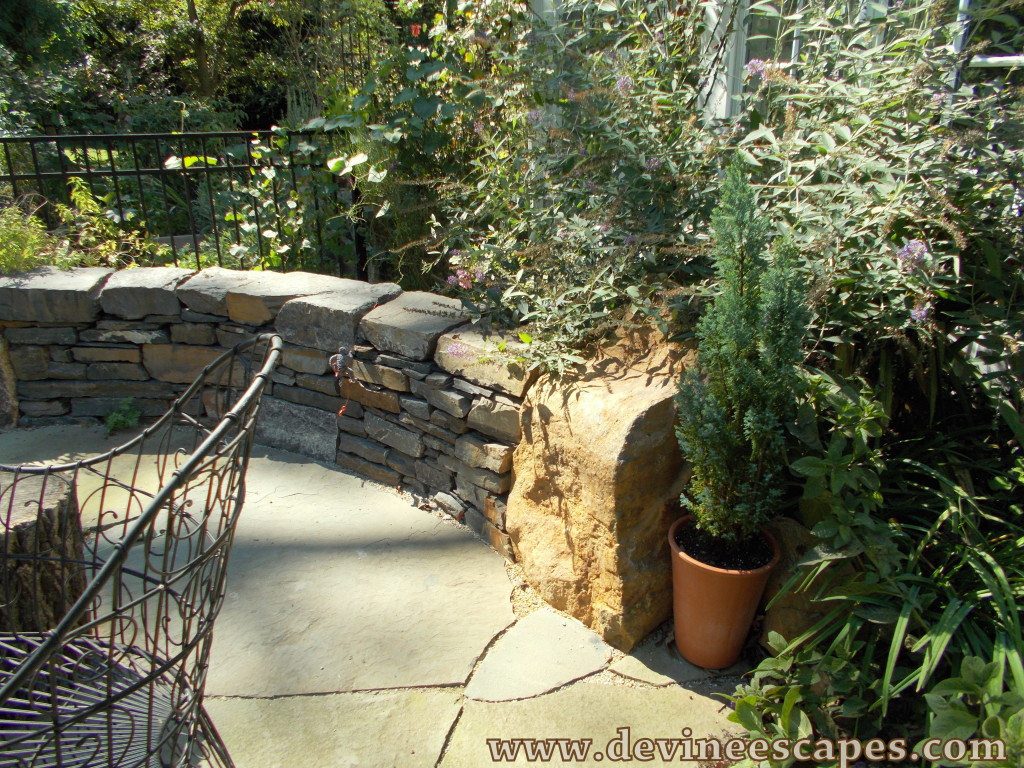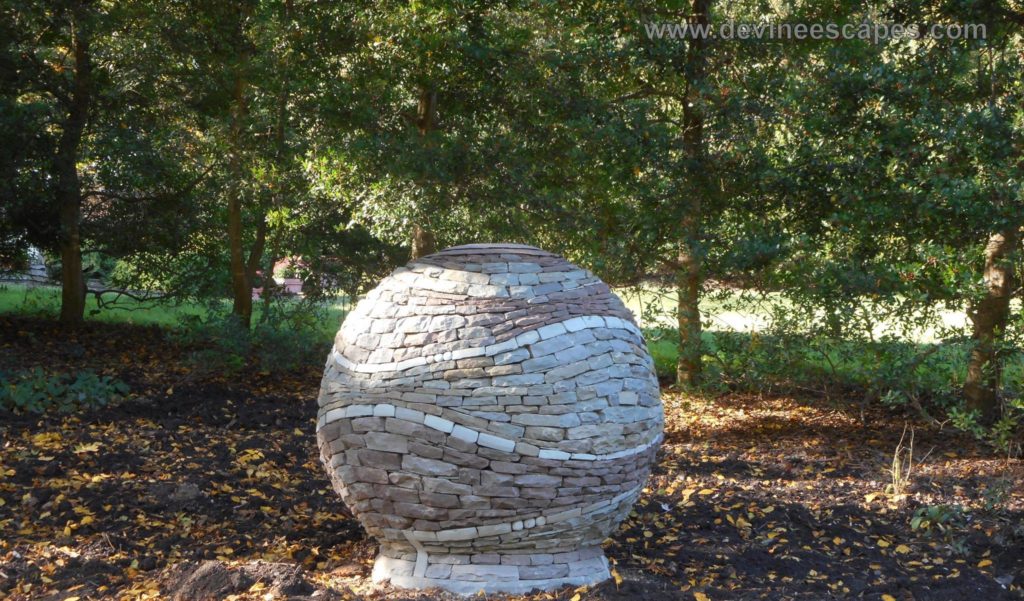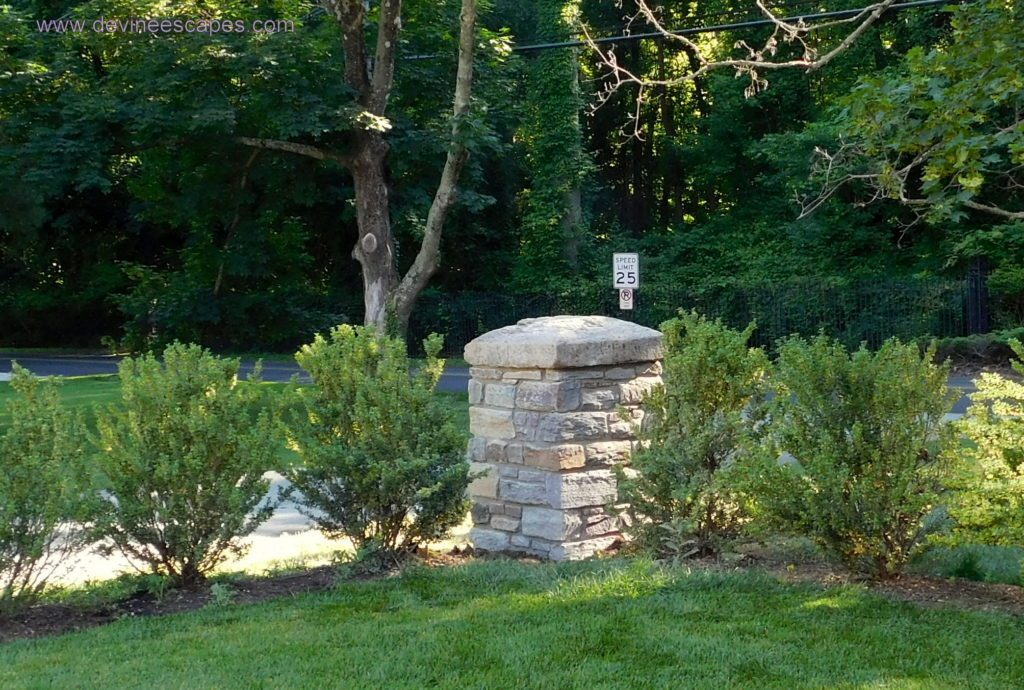Devine Escapes, hardscaping teacher and contractor
Phone: 610.301.4269 email: devin@devineescapes.com

Sustainability? Build it to last and make it pretty.
Sustainability in hardscape construction
The construction industry is a major source for ecological concern. At every step of the game, there is impact. Some are immediately obvious, such as cutting down trees, transporting building materials across great distances and manufacturing synthetic building materials.
Not all environmental effects are obvious though. For example, if you build with natural stone, rather than a faux material, you can say you are building “green”, right? Well, in reality, it’s not so simple. How far away was that stone quarried? Transportation is a big one, remember. Okay, so the stone is reasonably local, good. Still there was some transportation involved, and the quarrying process itself ifs going to have some impact. Another question: is a concrete foundation involved?
Related content: no plastic in the landscape
For every ton of concrete produced approximately 1 ton of carbon is released into the atmosphere.
That sounds like a lot, right?
I want to make the world a more beautiful place. My work should resonate with the spirit.Outdoor living spaces should inspire, my sculptures should delight and all those things I build should last a good long time. But I don’t want to make the world better locally, at the expense of the world at large. I work with natural materials because I love these materials. Forms and patterns are taken from nature…this is a celebration of life, and of nature and natural beauty.
So when considering the sustainability of any construction project, I’m primarily looking at:
- the environmental impact of the material manufacture and/or the material harvesting
- distance the material was transported
- how beautiful the structure is
- sturdiness of structure
The third and fourth points here directly relate to how long the structure will last. If you build an ugly stone patio, or an unattractive stone wall, then likely someone will want to tare it down and replace it, eventually. If you build something that is not built to last, then it will need to be replaced at some point if/when it becomes dangerous or otherwise unusable. If either case, the thing– the house, or driveway, or arbor or whatever, will need to be torn out, new materials brought in, power tools fired up again. The old materials possibly might even end up in a landfill.
That’s not the sort of legacy I want to be involved in. I want to be involved in promoting actual sustainability, and disseminating the wisdoms of permaculture design science.
So for sustainability purposes I vastly prefer dry stone construction
For patios, stone walls and other hardscape features, I’m almost always recommending dry stone. Even without environmental concerns, I’m preferring dry stone over cemented-in any day, as a matter of aesthetic preference but also because I know how northern winters effect concrete and mortar. But it is not a simple case of “all concrete is evil all the time and no one should ever use it”. It is however a situation where a lot of environmental impact goes into concrete production and transportation–and concrete is notorious for not lasting forever. Bridges get closed all the time. Step on a crack and break your mother’s back.
Many times I’ve heard concrete contractors say “it’s not a matter of if it will crack, it’s a matter of when.”
One of the biggest reasons for concrete failing is rebar and other steel reinforcement. Concrete has great compression strength, but not much tensile strength. So, without steel reinforcement, concrete is more likely to crack. Problem is that with steel reinforcement, concrete is guaranteed to crack–eventually. The steel is embedded in the concrete, it rusts, expands to as much as 3 times it’s original size–and the concrete fails.
Enter basalt rebar
Basalt rebar is a concrete reinforcement product made from volcanic stone. Much stronger than steel, it also never corrodes. It does cost a bit more than common steel rebar–in the short term. But if the thing you build lasts forever, well, that’s going to cost you (and the Earth too) a lot less, than if you build a thing that gets replaced every couple of decades.
Hypothetically, we could even compare two projects–one of which uses concrete with basalt rebar, and another which uses no concrete. So okay, the one with concrete already has a huge environmental impact involved just because of that concrete….but if you’re comparing it to another project that does not use any concrete–but was built poorly and needs to be re-built. Well, sometimes there is nuance.
Please do not get confused though, as far as hardscapes are concerned, I’m still going dry stone–and well built dry stone construction should last a life time. Millennia, even.

This was a public commission. The engineer insisted on a concrete foundation–no problem! said I, but let’s go with basalt, not steel.
Related content: dry stone spheres

stone pillar with reclaimed cap stone. The cap stone is guessed to be maybe 100, 200 years old. Could be older still. Built in the historic style of the area (Bryn Mawr Pennsylvania) in an area where there are many old stone pillars to be seen. No steel was used. May it stand true, along with the 18th and 19 century pillars , for ages to come.
thank you
![]()
What an amazing article! This should be read by anyone and everyone who cares about life–if I said “our world” that would not be enough. You need to publish!
I will publish, in good time maybe a few years. Thank you!